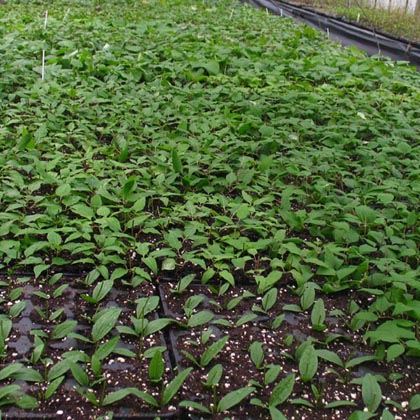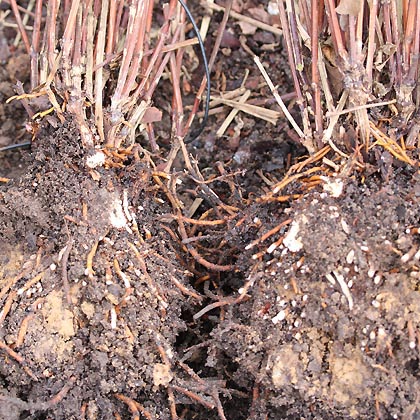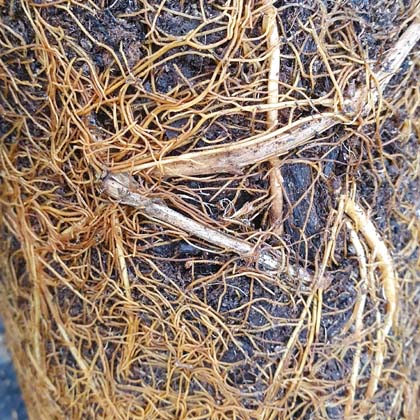
Propagation by sowing
Sowing is a classic example of how to propagate clematis. Many botanical clematis species can be propagated by sowing. Germination takes very different times and can be between 3 weeks and up to 14 months, because some clematis are cold germinators (frost germinators). When sowing, it is genetically determined that the seedlings are not always identical to the starting plant (mother plant). Domestic clematis are usually “real”.
Propagation by cuttings
Propagation by cuttings is best done from late spring to early summer. This requires some experience and skill. In gardening practice, large quantities of plants are produced. One speaks here of mass proliferation. The procedure is similar to that of other plants that are propagated through cuttings.





The differences to other cuttings are not of great importance. Rooting takes 21 to 35 days. Mainly clematis varieties that are easy to root are propagated. This explains why there is often only a very limited range available. (e.g. at discounters) It is common practice to cover the cuttings with foil when propagating them. This ensures a high level of humidity and prevents the cuttings from drying out. Regular ventilation is essential. Direct sunlight must be avoided.
Clematis montana and some other species can also be easily propagated by cuttings.
This can be done in the winter months. You must always work frost-free. If you don’t have a suitable greenhouse, you can make do with a leaf chute.
Propagation by division, root suckers and suckers


Perennial clematis can also be propagated by division. The clematis should be at least 3 years old before dividing the clematis. In practice, many garden perennials are propagated by division. Hibernation, from November to February, is the best time for this. You can also divide clematis that have been cultivated in a container at this time. Division also means rejuvenation and vitalization in one.


Some clematis form root runners .
These include: Clematis orientalis, Clematis alpina, Clematis socialis, Clematis heracleifolia and others. So it is not surprising that a new clematis has established itself in the immediate vicinity of the “parent plant”. Division is also a suitable method of propagation here. Individual clematis can also be propagated very well by lowering them into the ground. As a hobby gardener, this is a safe method of propagation. It takes considerably longer than with cuttings. For many varieties it is 2 – 3 months with this propagation method. You can do lowering almost all year round.
Propagation by grafting
Propagate clematis by grafting. It is probably the “supreme discipline” of all clematis propagation methods! There are only a few growers or companies worldwide that propagate clematis by grafting.
The practice of grafting has almost been lost. It was introduced 110 years ago in the Pinneberg district by Max Krause. He had learned clematis cultivation in Great Britain and virtually brought it with him. My father, Friedrich Westphal senior, had worked in Max Krause’s company for many years until he set up his own business in 1953.



Clematis grafting is a form of nurse grafting by lateral plating. Experts are familiar with a comparable method of propagation for conifers. Turn two into one! The “nurse”, Clematis vitalba, serves as a grafting rootstock and brings rooting capacity from one year of previous cultivation to the propagation. The scions grow together with the rootstock after 14 – 21 days and start growing immediately. Even during this growth phase, the scions begin to form their own roots, so that two different and equivalent root systems are formed. The rootstock (Clematis vitalba) provides vigorous and healthy growth, and Clematis vitalba is also immune to clematis wilt! The former wounds caused by grafting are compensated for by a rapid healing process with callus formation. Entry points for various fungal diseases are thus successfully closed from the outset. The fine root system is usually located in the upper 20 – 40 cm layers of soil.
The “real” thick-fleshed roots have storage capacity and can penetrate very deep into the soil (up to 1.50 m). Dry periods can be bridged very well. The decisive advantage of these two root systems is that the clematis adapts independently to the new soil conditions. No other method of propagation can achieve this! My customers have been benefiting from this advantage for many years without really knowing it. 👍😉
A greenhouse is essential for propagation! The best time for grafting is the month of March. A clematis from this type of propagation is ready for sale with flowers for the first time in August/September (7 months later). (For comparison: a clematis propagated from cuttings takes 12-14 months to flower for the first time)
Wild shoots that could sprout from the rootstock are ruled out with clematis. Among other things, the problem with wild shoots in rose grafting is well known.
